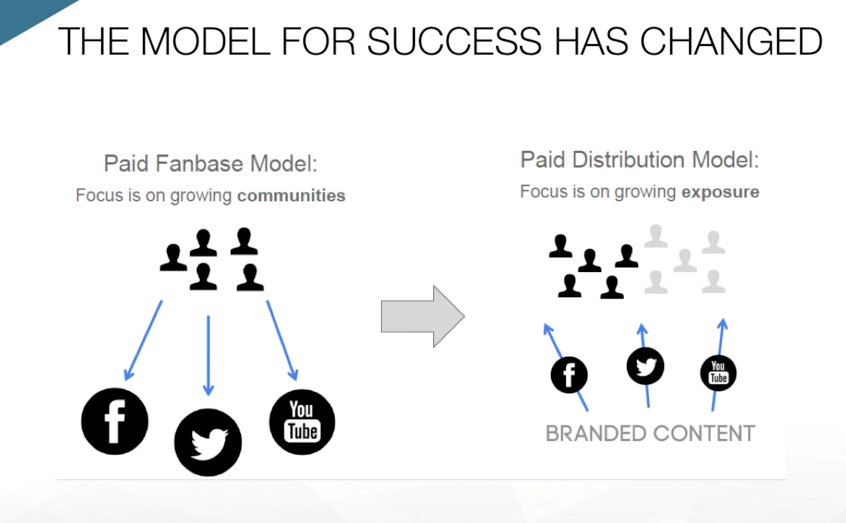5 Steps to Understanding your Customer’s Buying Process
The Customer Buying Process (also called a Buying Decision Process)
describes the process your customer goes through before they buy your
product. Understanding your customer’s buying process is not only very
important for your Salespeople, it will also enable you to align your
sales strategy accordingly.
The process has been interpreted by many scholars over the years; however, the five stages framework remains a good way to evaluate the customer’s buying process. John Dewey first introduced the following five stages in 1910:
1. Problem/Need Recognition This is often identified as the first and most important step in the Customer’s Decision Process. A purchase cannot take place without the recognition of the need. The need may have been triggered by internal stimuli (such as hunger or thirst) or external stimuli (such as advertising or word of mouth).
2. Information Search Having recognised a problem or need, the next step a customer may take is the Information Search stage, in order to find out what they feel is the best solution. This is the buyer’s effort to search internal and external business environments, in order to identify and evaluate information sources related to the central buying decision. Your customer may rely on print, visual, online media or word of mouth for obtaining information.
3. Evaluation of Alternatives As you might expect, consumers will evaluate different products or brands at this stage on the basis of alternative product attributes – those which have the ability to deliver the benefits the customer is seeking. A factor that heavily influences this stage is the customer’s attitude. Involvement is another factor that influences the evaluation process. For example, if the customer’s attitude is positive and involvement is high, then they will evaluate a number of companies or brands; but if it is low, only one company or brand will be evaluated.
4. Purchase Decision The penultimate stage is where the purchase takes place. Philip Kotler (2009) states that the final purchase decision may be ‘disrupted’ by two factors: negative feedback from other customers and the level of motivation to accept the feedback. For example, having gone through the previous three stages, a customer chooses to buy a new telescope. However, because his very good friend, a keen astronomer, gives him negative feedback, he will then be bound to change his preference. Furthermore, the decision may be disrupted due to unforeseen situations such as a sudden job loss or relocation.
5. Post-Purchase Behaviour In brief, customers will compare products with their previous expectations and will be either satisfied or dissatisfied. Therefore, these stages are critical in retaining customers. This can greatly affect the decision process for similar purchases from the same company in the future, having a knock-on effect at the Information Search stage and Evaluation of Alternatives stage. If your customer is satisfied, this will result in brand loyalty, and the Information Search and Evaluation of Alternative stages will often be fast-tracked or skipped altogether.
On the basis of being either satisfied or dissatisfied, it is common for customers to distribute their positive or negative feedback about the product. This may be through reviews on website, social media networks or word of mouth. Companies should be very careful to create positive post-purchase communication, in order to engage customers and make the process as efficient as possible.
http://www.b2bmarketing.net/blog/posts/2013/06/24/5-steps-understanding-your-customer%E2%80%99s-buying-process#
The process has been interpreted by many scholars over the years; however, the five stages framework remains a good way to evaluate the customer’s buying process. John Dewey first introduced the following five stages in 1910:
1. Problem/Need Recognition This is often identified as the first and most important step in the Customer’s Decision Process. A purchase cannot take place without the recognition of the need. The need may have been triggered by internal stimuli (such as hunger or thirst) or external stimuli (such as advertising or word of mouth).
2. Information Search Having recognised a problem or need, the next step a customer may take is the Information Search stage, in order to find out what they feel is the best solution. This is the buyer’s effort to search internal and external business environments, in order to identify and evaluate information sources related to the central buying decision. Your customer may rely on print, visual, online media or word of mouth for obtaining information.
3. Evaluation of Alternatives As you might expect, consumers will evaluate different products or brands at this stage on the basis of alternative product attributes – those which have the ability to deliver the benefits the customer is seeking. A factor that heavily influences this stage is the customer’s attitude. Involvement is another factor that influences the evaluation process. For example, if the customer’s attitude is positive and involvement is high, then they will evaluate a number of companies or brands; but if it is low, only one company or brand will be evaluated.
4. Purchase Decision The penultimate stage is where the purchase takes place. Philip Kotler (2009) states that the final purchase decision may be ‘disrupted’ by two factors: negative feedback from other customers and the level of motivation to accept the feedback. For example, having gone through the previous three stages, a customer chooses to buy a new telescope. However, because his very good friend, a keen astronomer, gives him negative feedback, he will then be bound to change his preference. Furthermore, the decision may be disrupted due to unforeseen situations such as a sudden job loss or relocation.
5. Post-Purchase Behaviour In brief, customers will compare products with their previous expectations and will be either satisfied or dissatisfied. Therefore, these stages are critical in retaining customers. This can greatly affect the decision process for similar purchases from the same company in the future, having a knock-on effect at the Information Search stage and Evaluation of Alternatives stage. If your customer is satisfied, this will result in brand loyalty, and the Information Search and Evaluation of Alternative stages will often be fast-tracked or skipped altogether.
On the basis of being either satisfied or dissatisfied, it is common for customers to distribute their positive or negative feedback about the product. This may be through reviews on website, social media networks or word of mouth. Companies should be very careful to create positive post-purchase communication, in order to engage customers and make the process as efficient as possible.
http://www.b2bmarketing.net/blog/posts/2013/06/24/5-steps-understanding-your-customer%E2%80%99s-buying-process#



Comments
Post a Comment